Building a stitch and glue canoe with Wouter
Wouter has been dreaming for along time of building his own canoe. The next few weeks we realize that dream with him. We’ll be building a stitch and glue canoe inspired by the classic Canadian Prospector. It will be a compact, 460 cm long, tandem canoe designed for recreational cruising on lakes and creeks.
Stitch and glue construction
The stitch and glue canoe building method is an easy and affordable way for a beginning canoeist to make his or her own boat. Basically, the technique consists of gluing panels of plywood together using epoxy and fiberglass. The stitching holds the panels in place while the epoxy is applied and allowed to cure.
Stitching planks together is a centuries old method of boat building. What makes it so convenient is the use of plywood (which is strong and stiff) and epoxy-fiberglass (which is strong and waterproof.
Stitching
First the panels are cut to the correct size and shape. Then they are sewn together by drilling small holes along the edges of adjoining panels, then using plastic cable ties as the stitches. The ties are strung through the holes and pulled tight to hold the panels together until they are glued.
Glueing
The stitching is only needed to keep the panels tightly together while glueing. We glue the panels with a small drop of super glue between the stitches. Once that’s done all the cable ties are removed and a filet of thickened epoxy resin is applied to the joints on the inside of the canoe.
When cured, the canoe is turned around and the outside get the same treatment. All holes and seams are filled with thickened epoxy resin. The stitch and glue canoe has its definite form now.
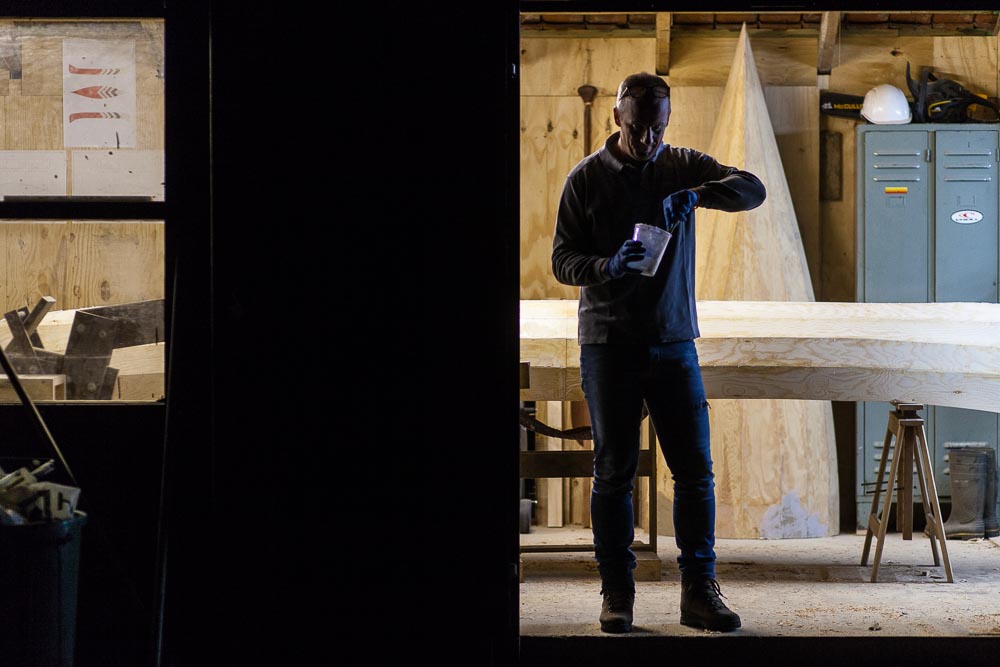
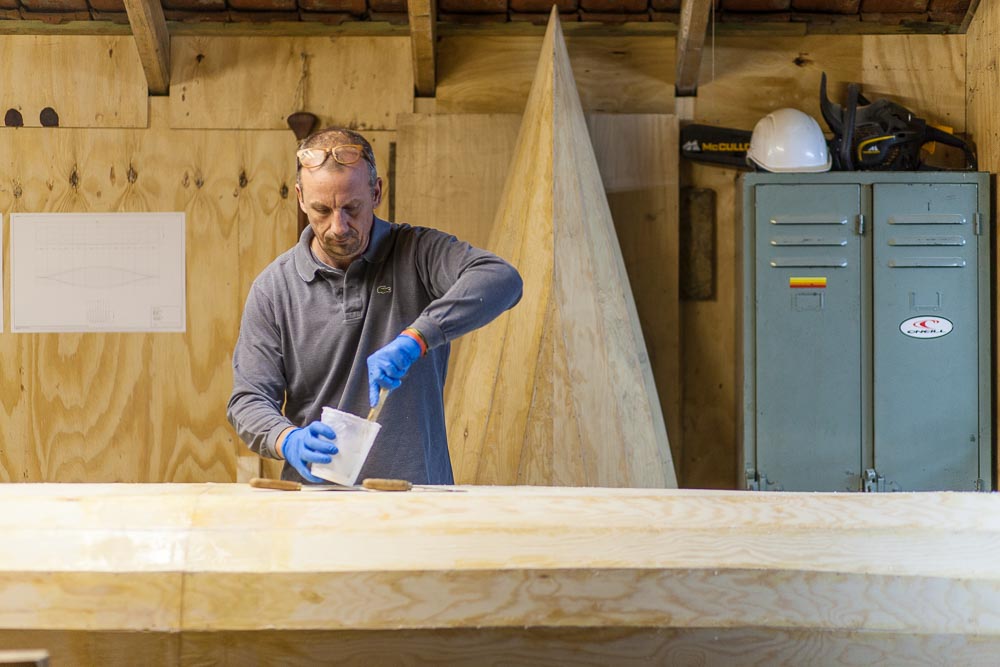
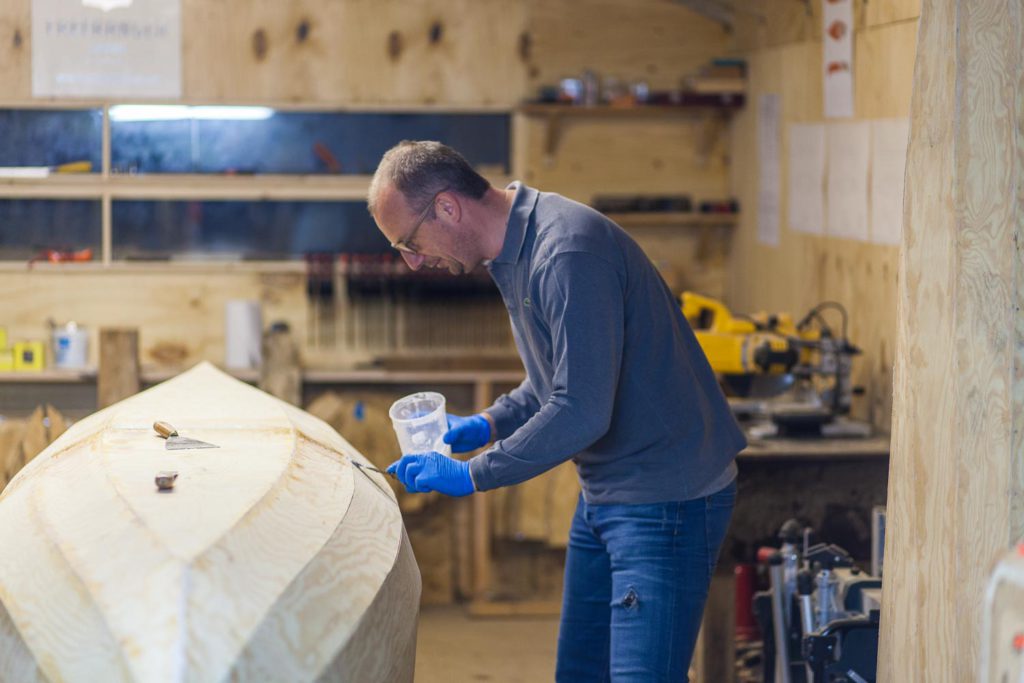
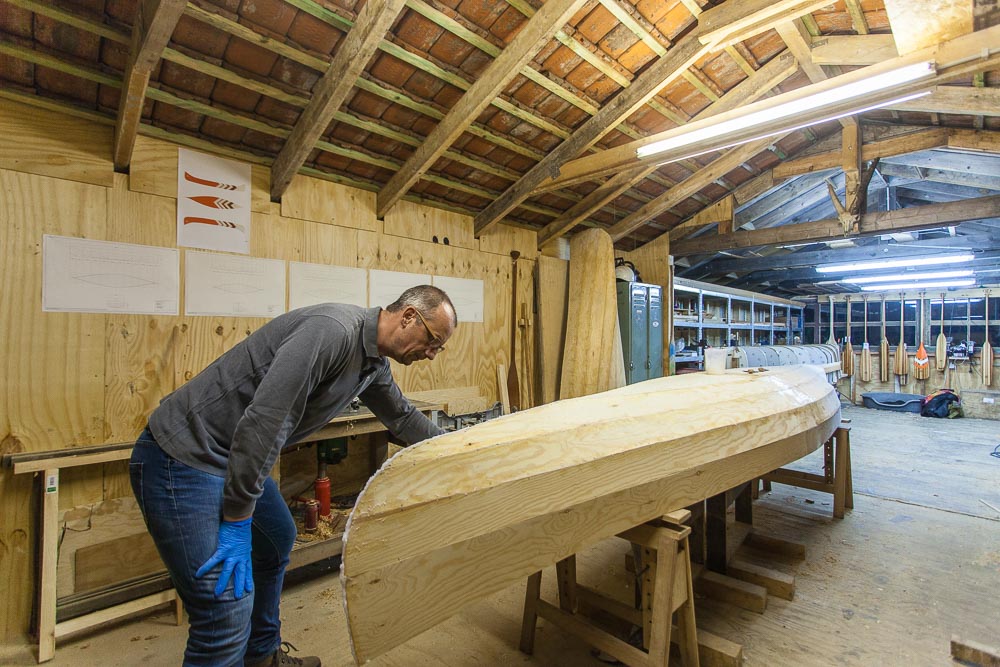
Preparing for fibreglassing
Next comes the most time consuming (and dusty) part of building a canoe; sanding the hull and getting all the seams flush.
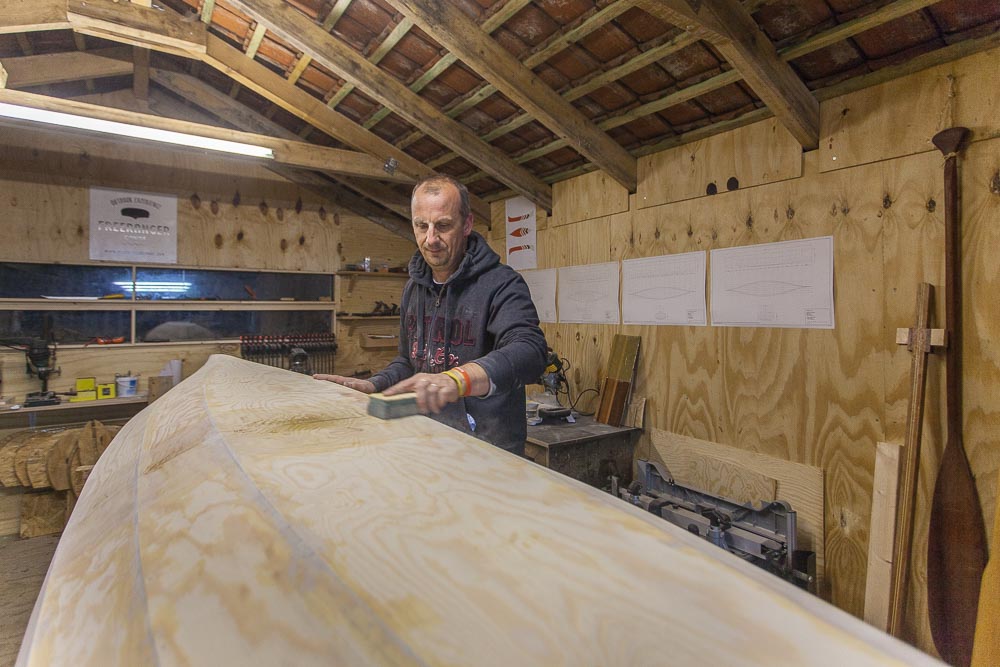
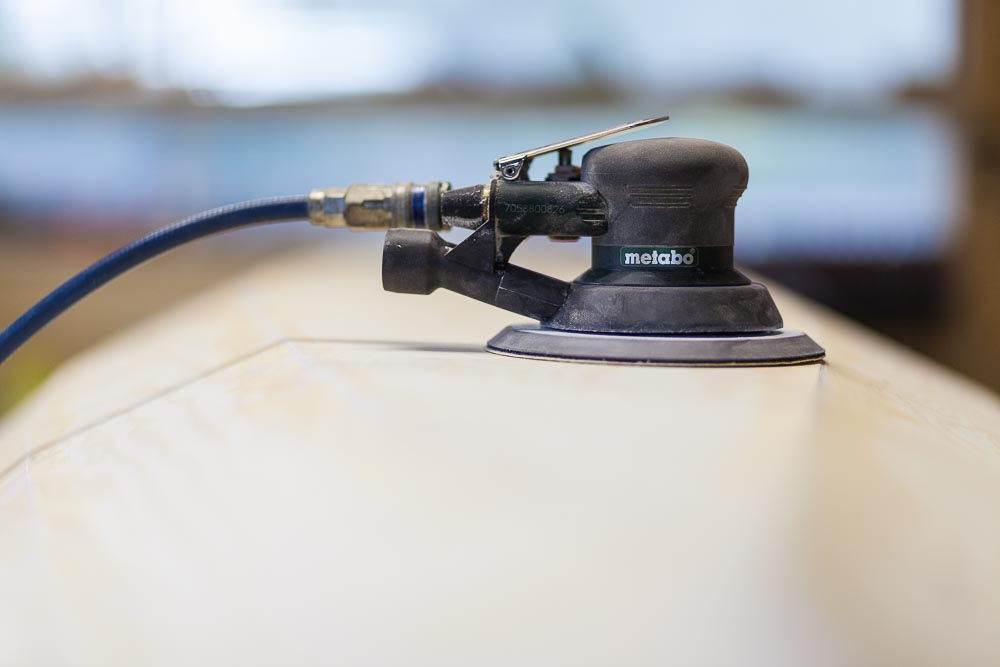
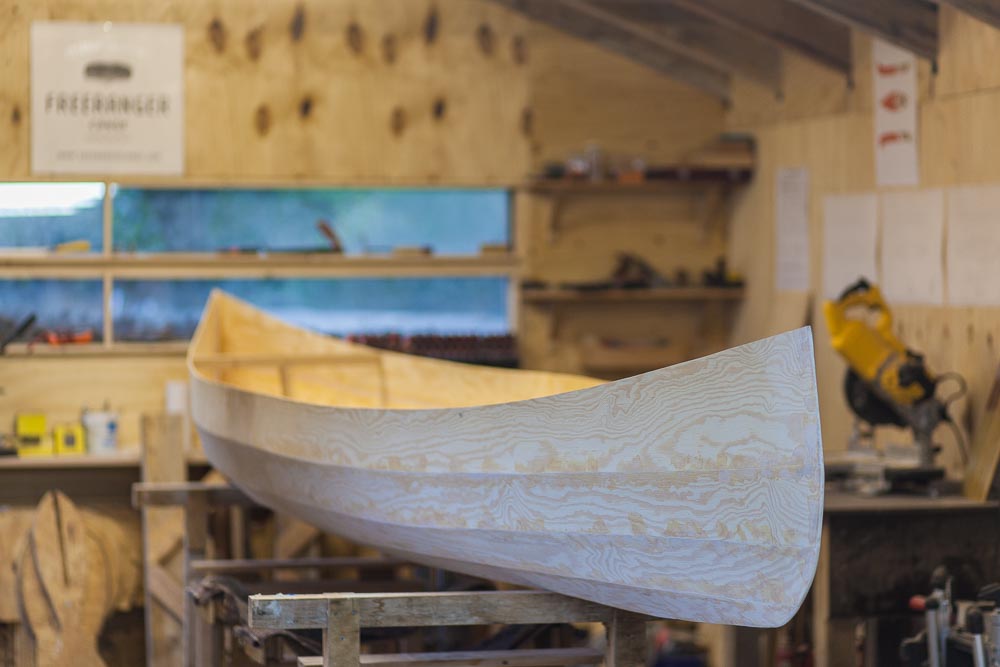
Fibreglassing
The epoxy-glass fabric laminate provides the canoe with the necessary strength and stiffness. It also gives the boat a strong and impenetrable waterproof coating. The glass cloth is aplied to the hull with 3 – 4 coats of epoxy.
Making and installing gunwales and decks
To provide the canoe with the necessary strength and stiffness gunwales are essential. Like all our canoes Wouter’s stitch and glue canoe is fitted with ash gunwales. The inner gunwales are glued in with thickened epoxy resin while the outer gunwales are fixed with screws to make replacement easy.
Making the seats
Our ash seats are assembled using a mortise and tenon joint. It is both simple and strong. Woodworkers around the world have used it for thousands of years to join pieces of wood, mainly when the adjoining pieces connect at an angle of 90°. For the webbing of our seats we use parachute strap. It provides for a strong and comfortable seating.
Finishing
The final step is getting the canoe painted. We use 2 component epoxy paint. Wouter’s stitch and glue canoe is painted in the colors of the Canadian flag with the distinctive maple leaf as a beautiful eye catcher.
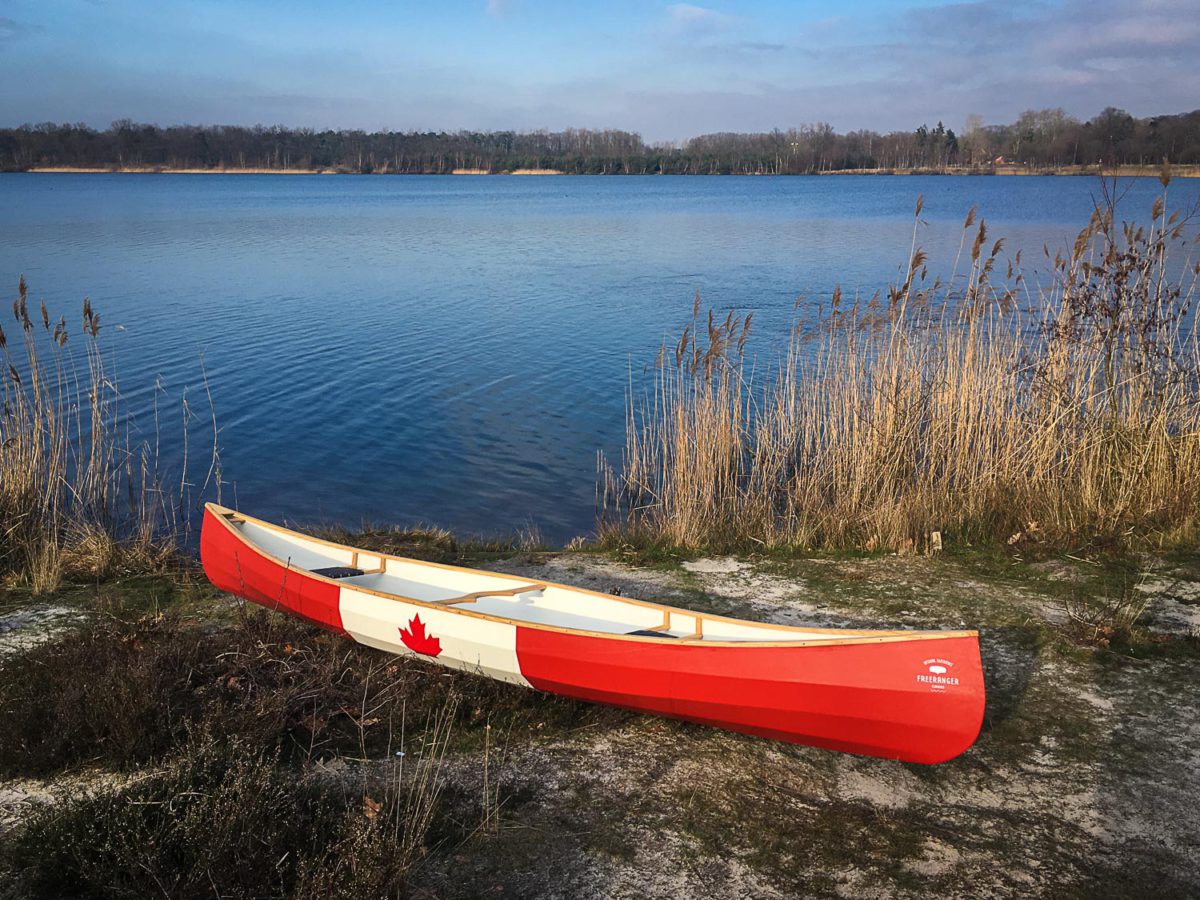


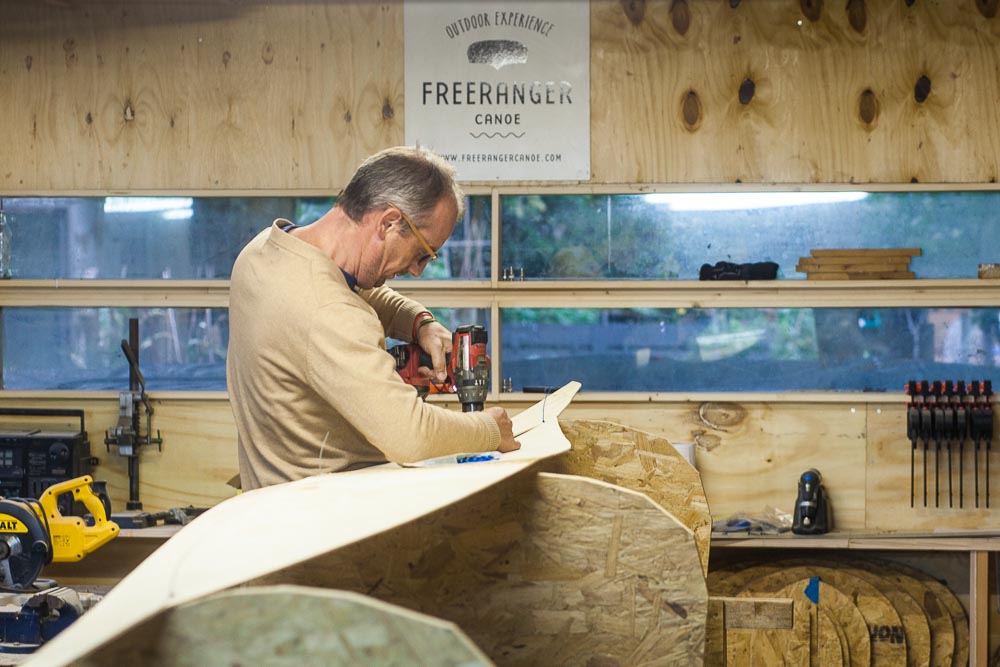
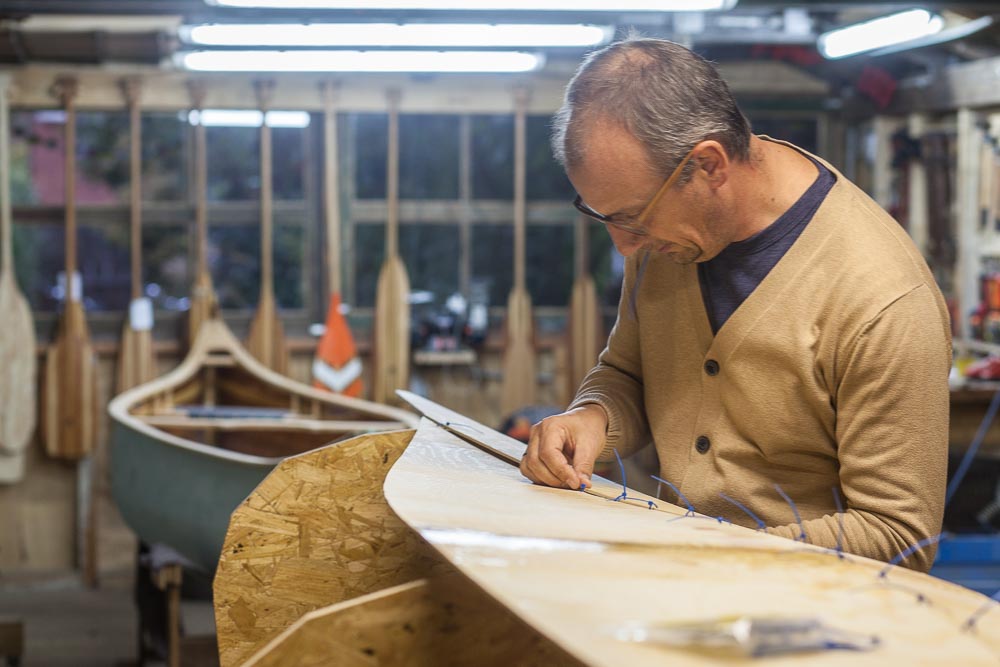
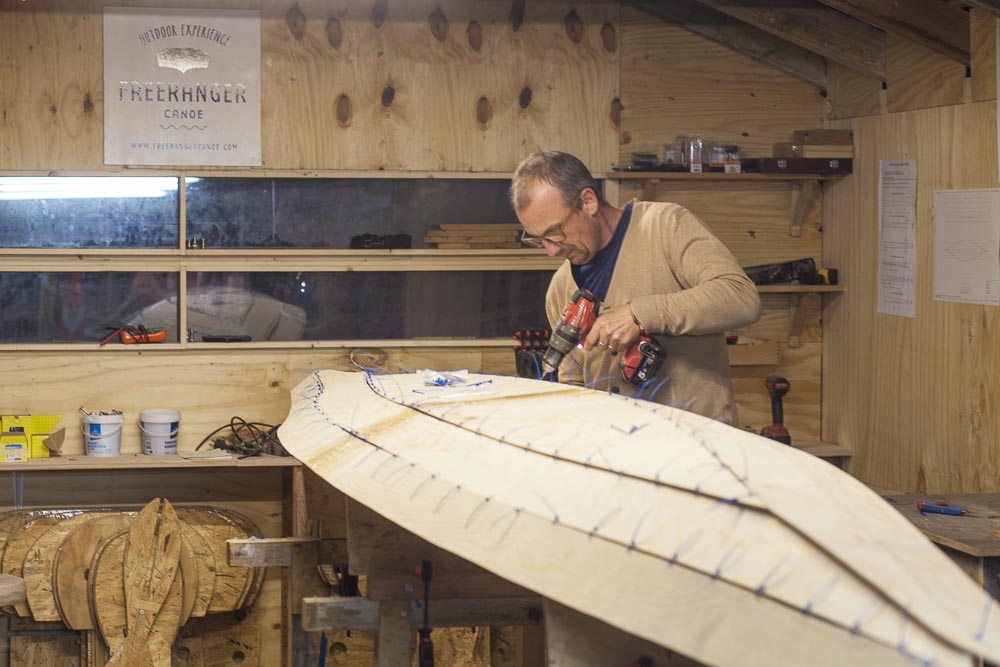
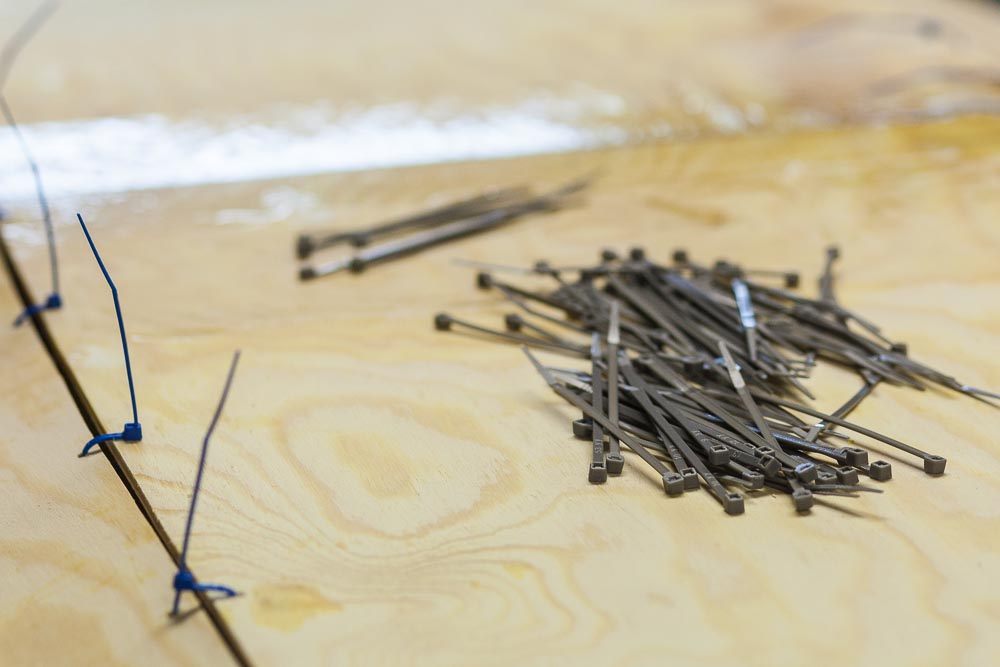
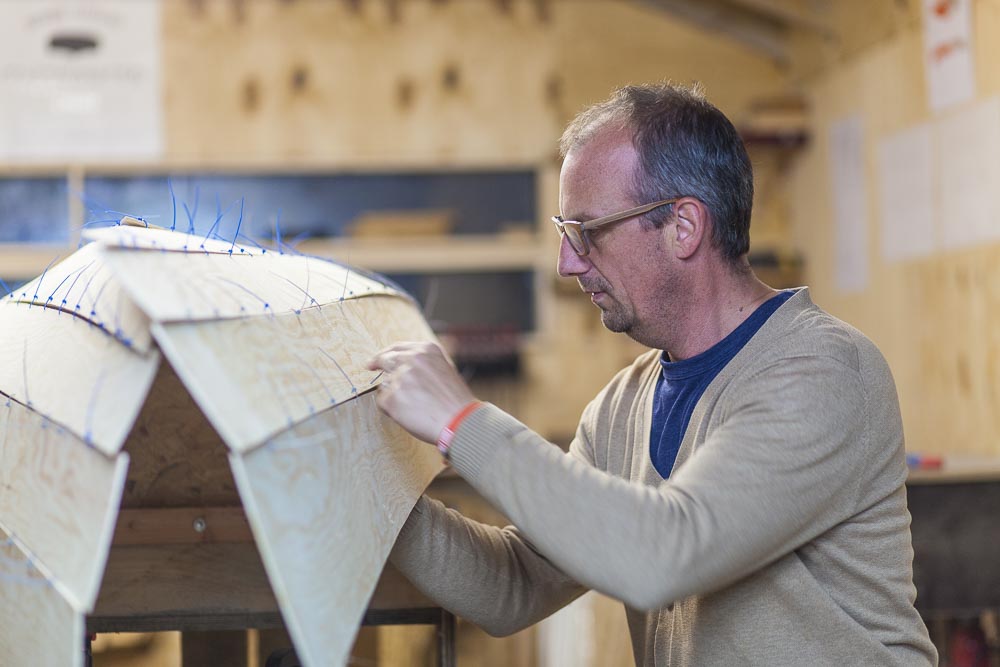
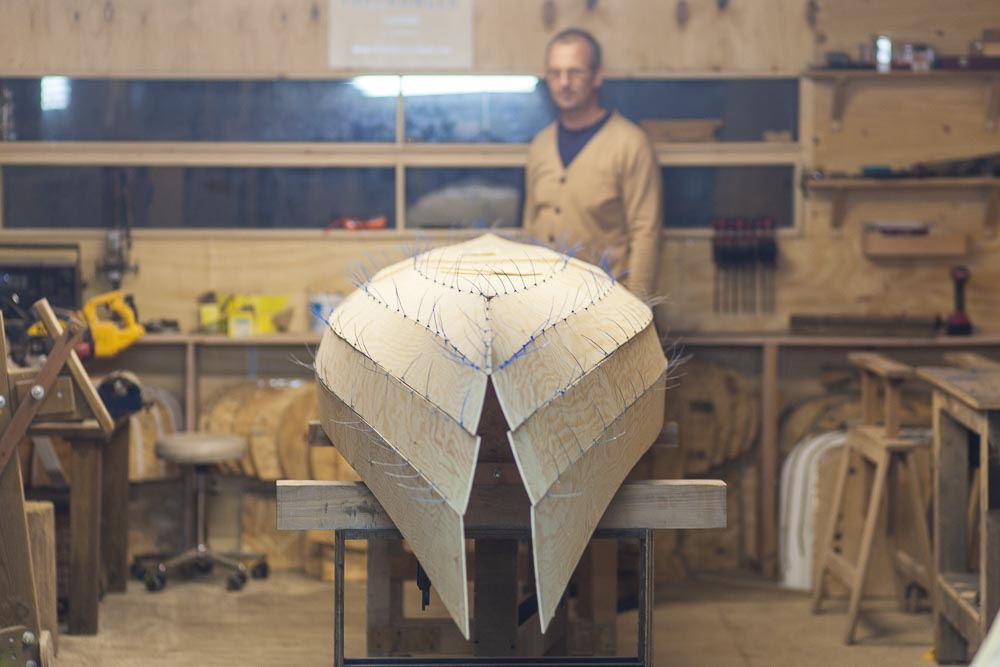
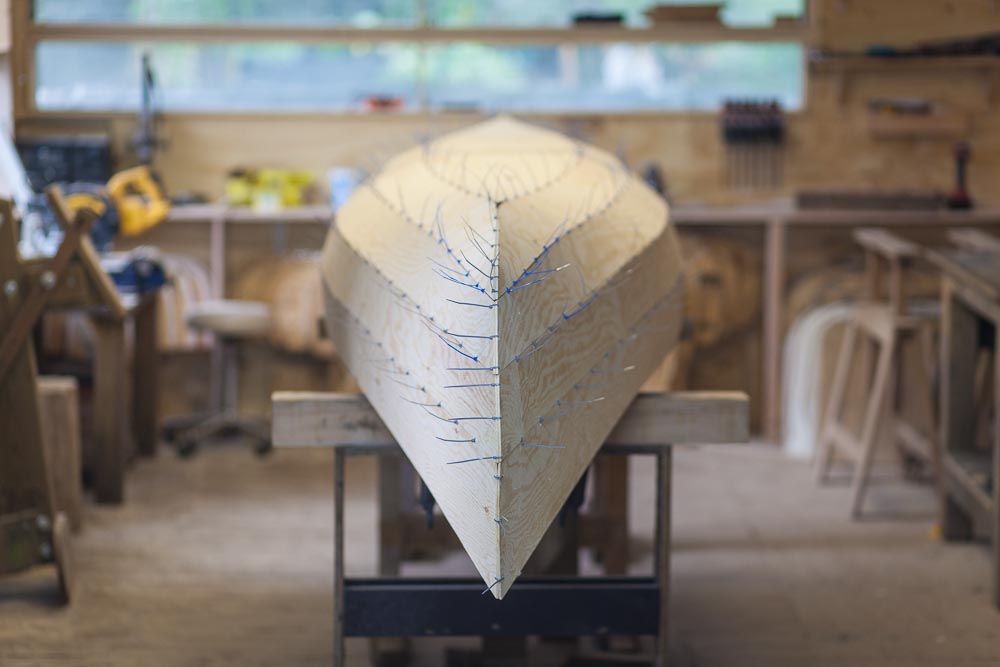
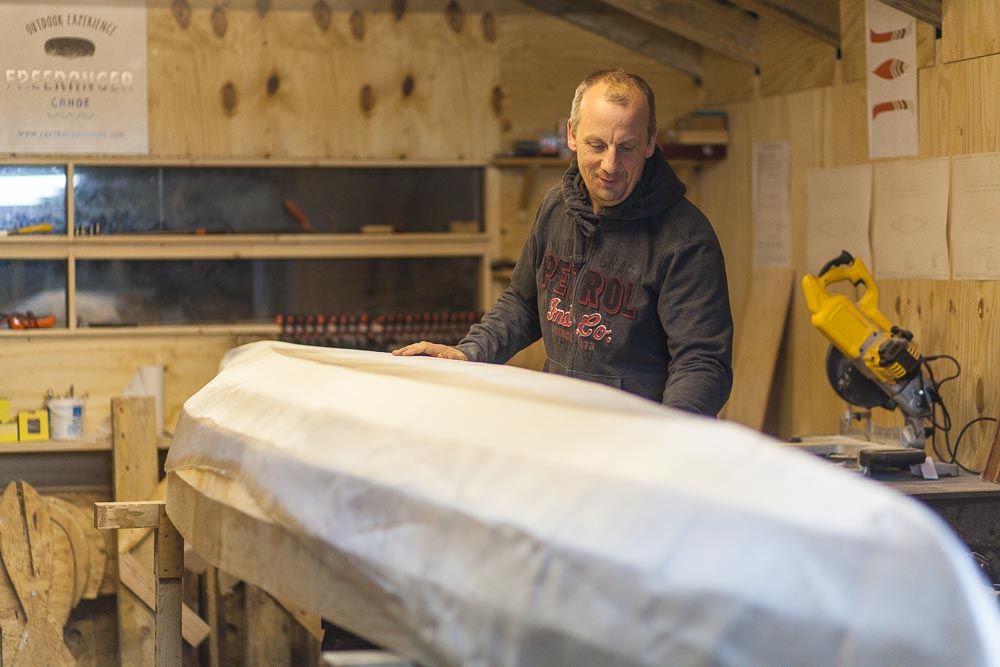
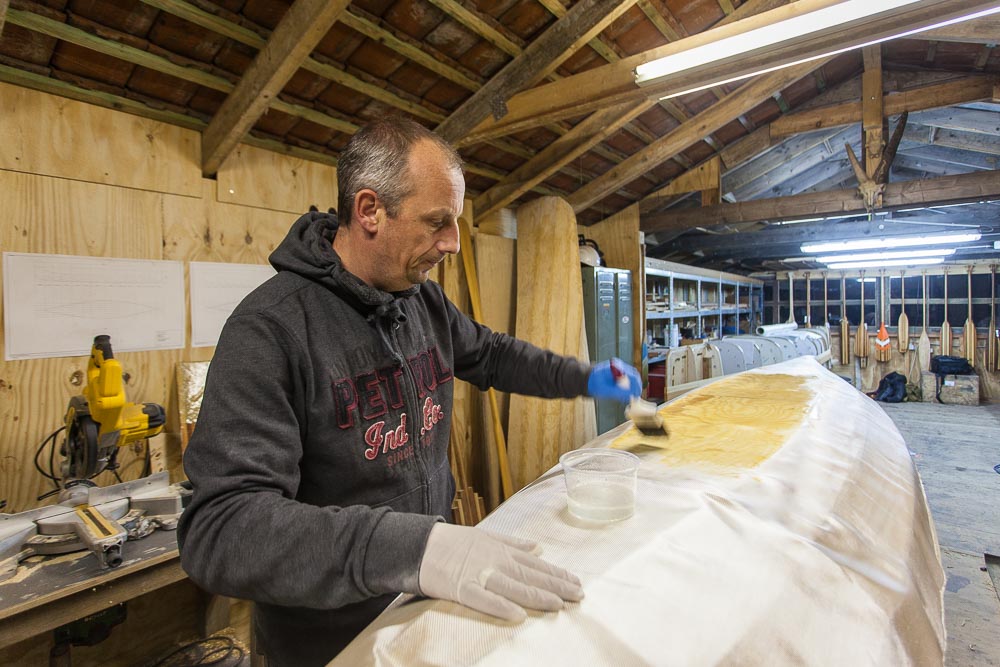
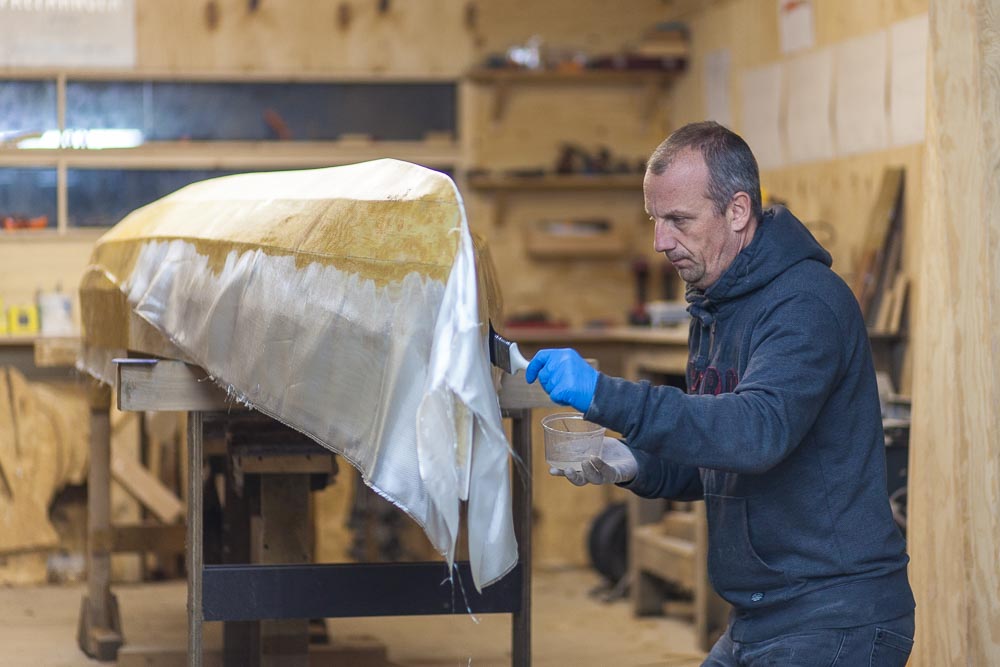
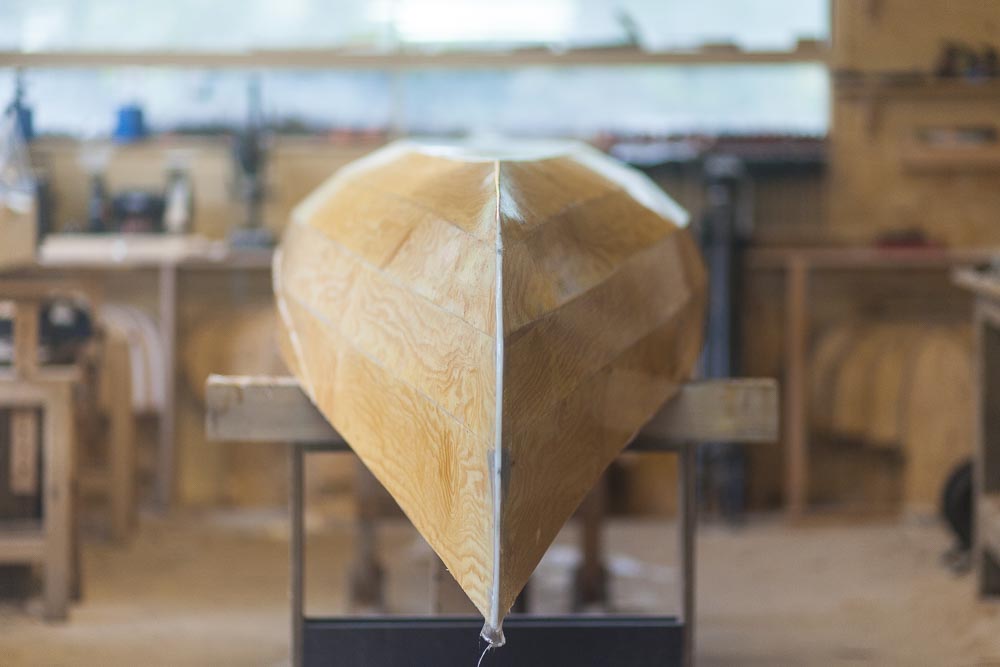
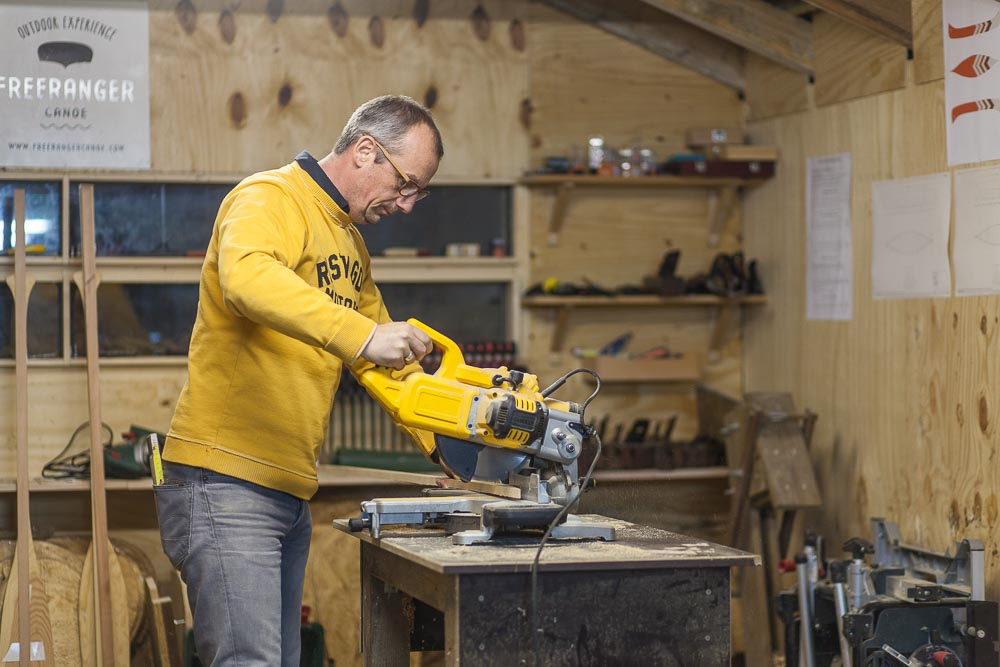
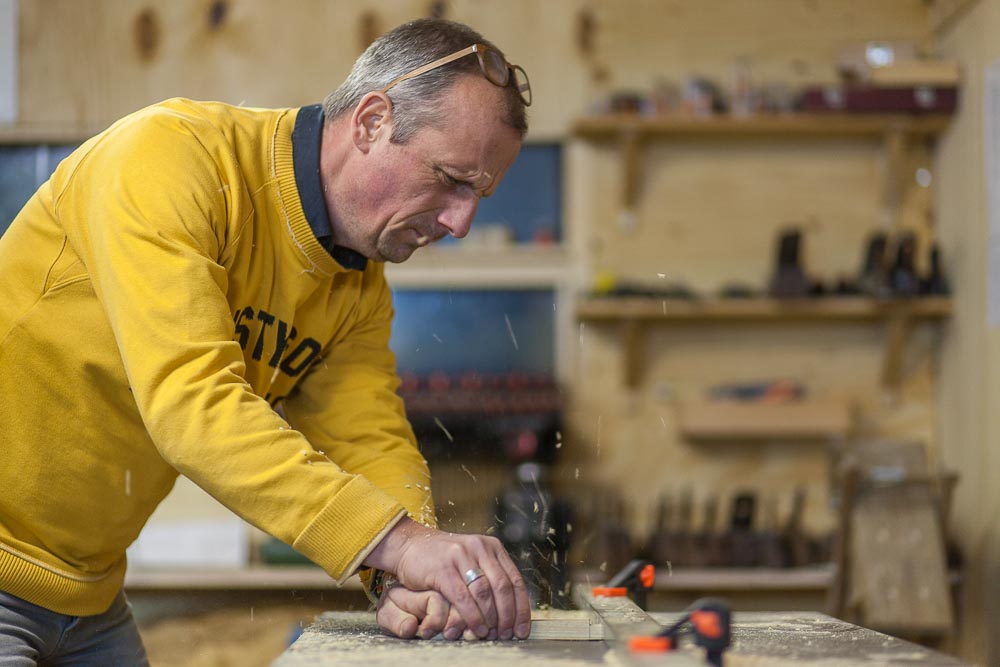
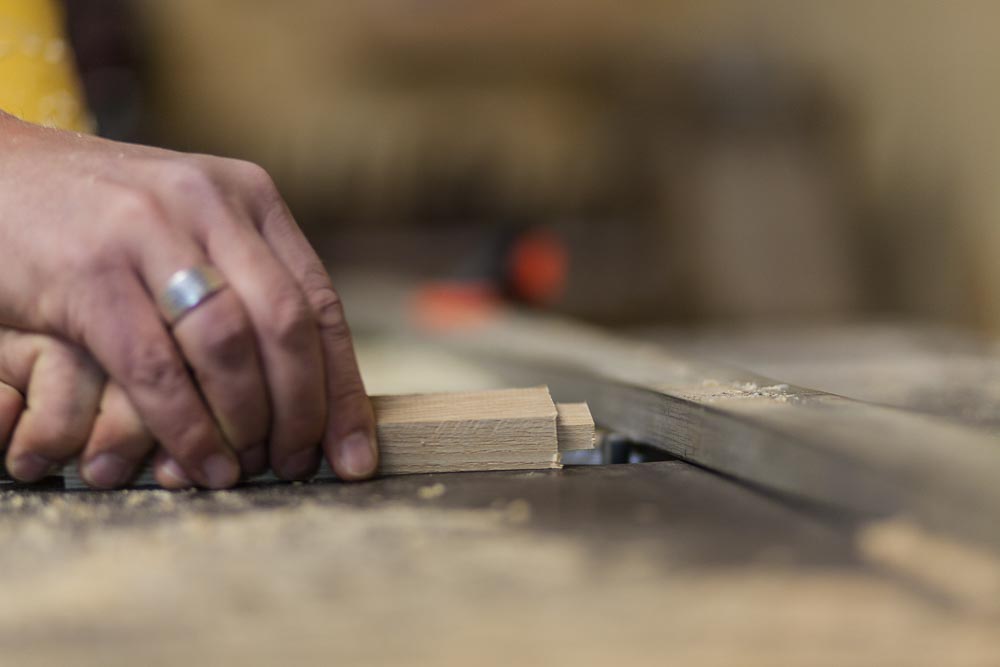
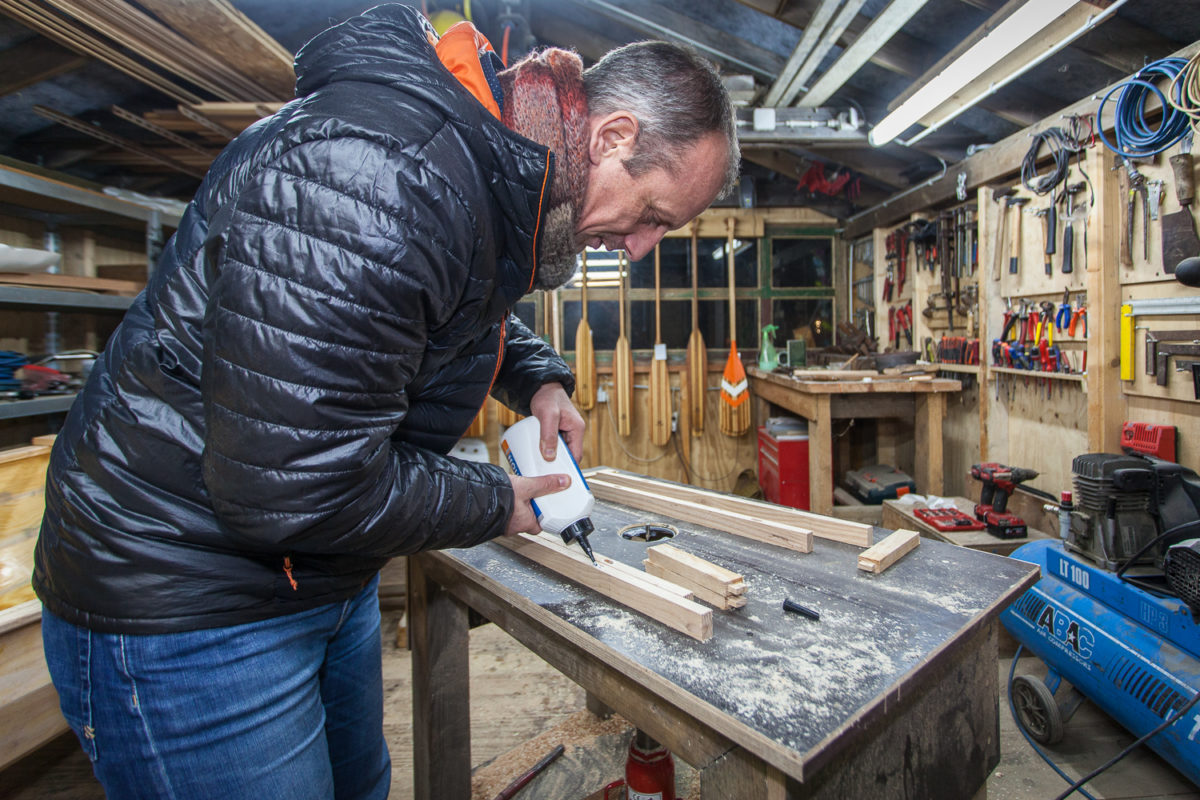
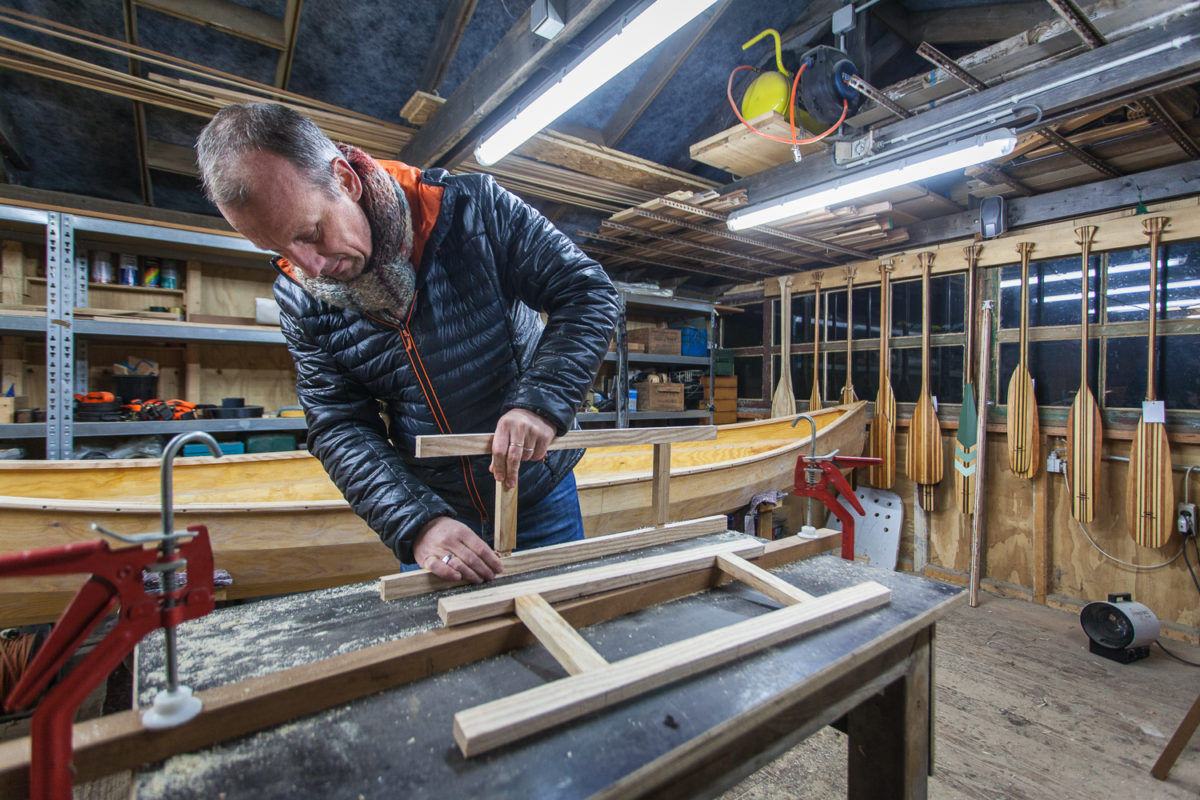
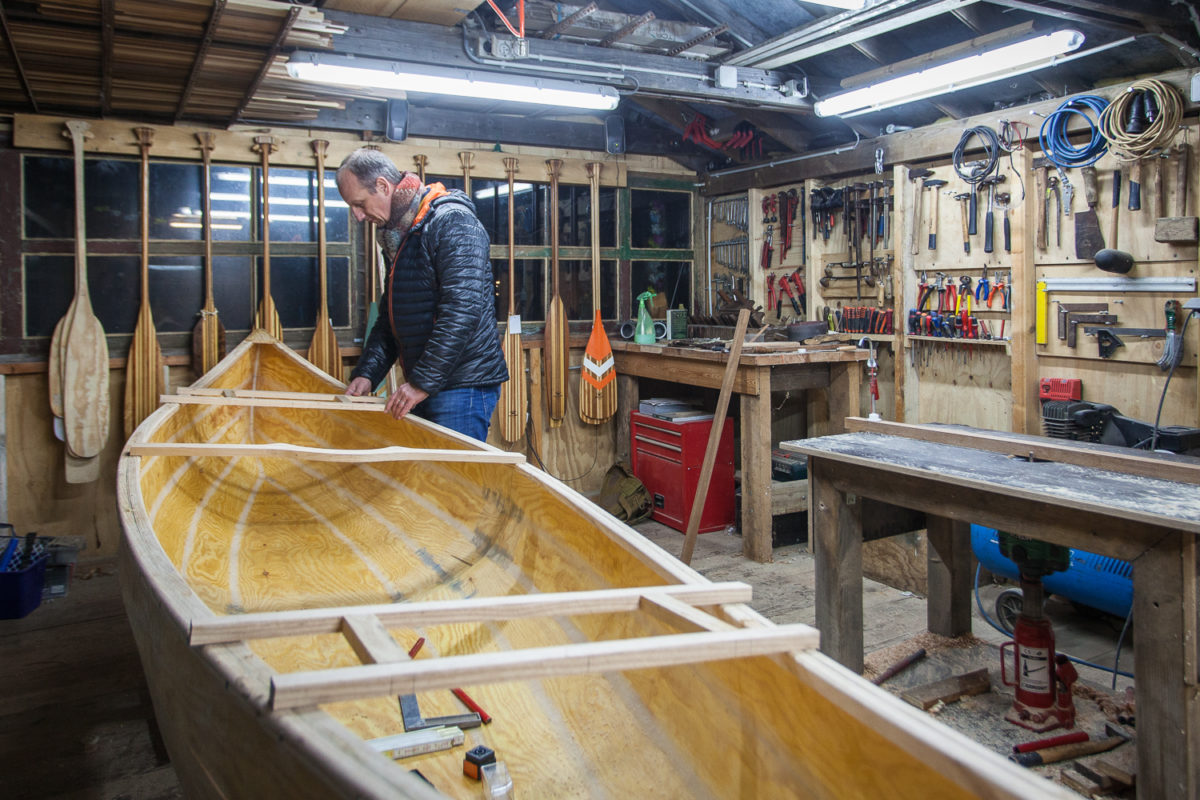
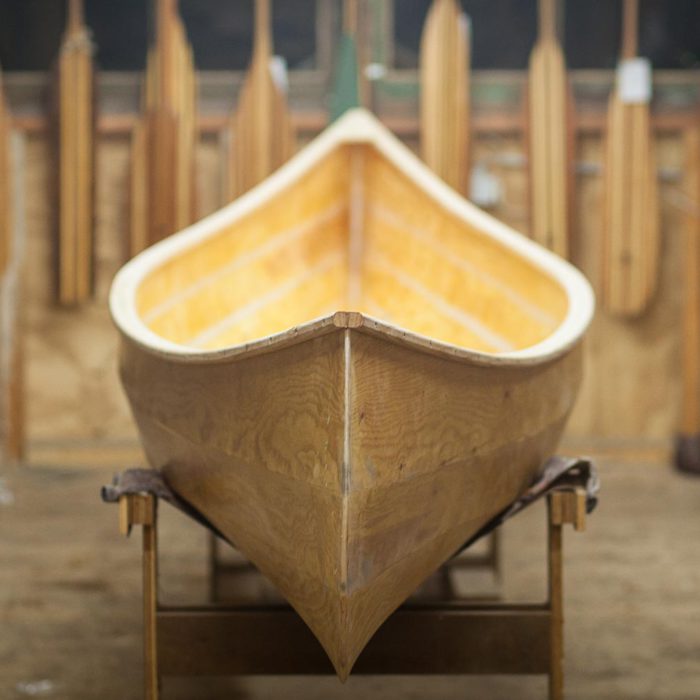
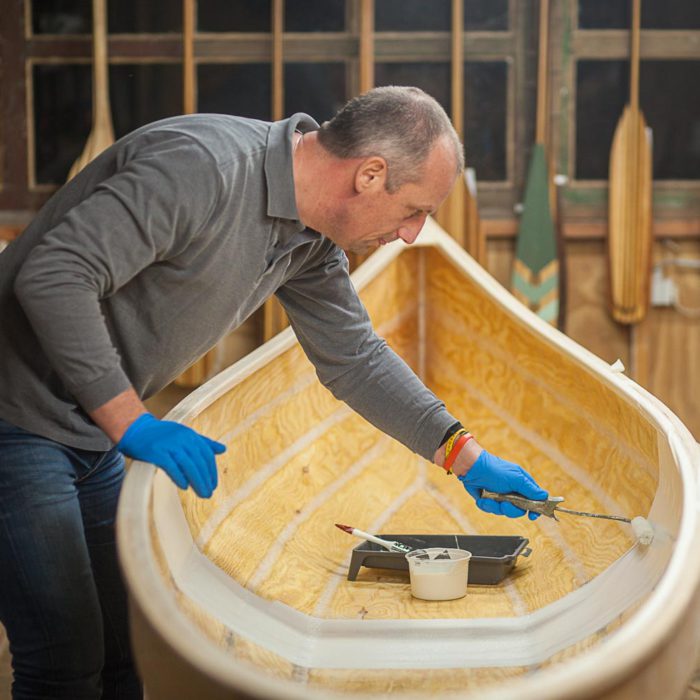
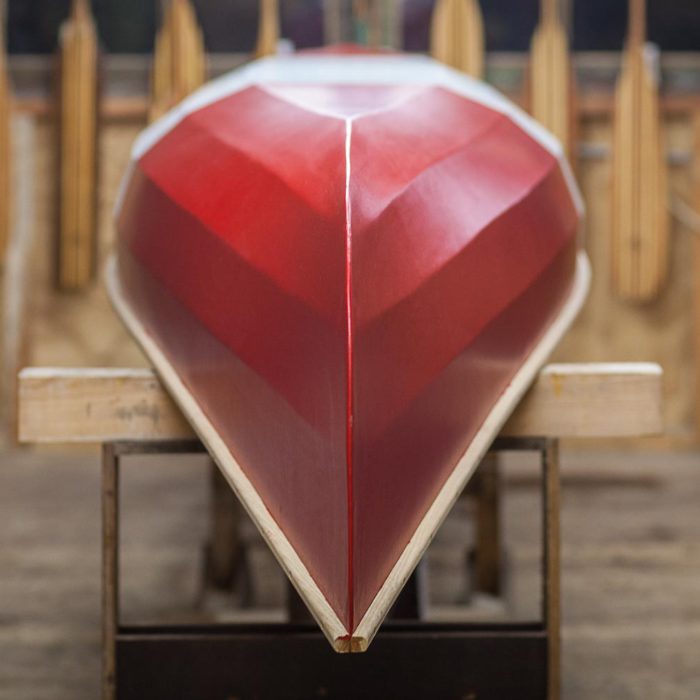
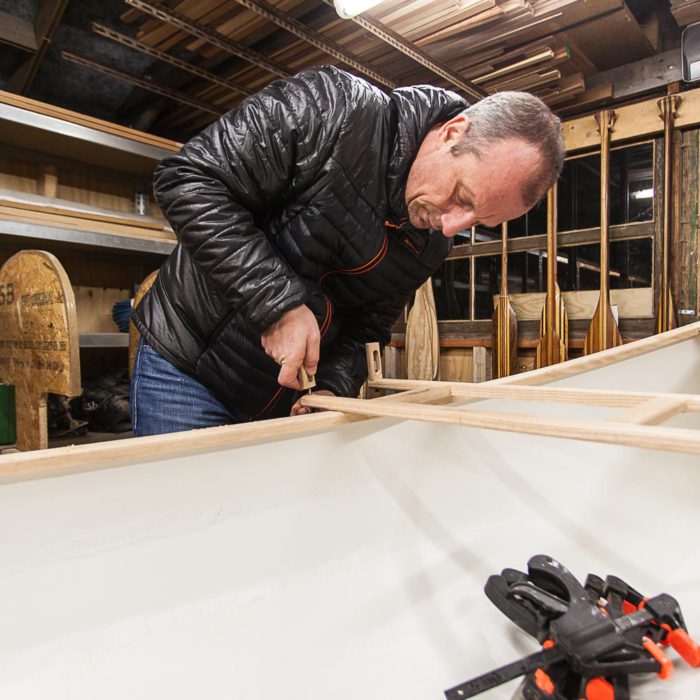
What an amazing piece of art this canoe is. Im looking for some plans to complete one of these as a project this spring with my daughter. Something we can do to bond and also to enjoy together as a family. Do you have any plans for this canoe? Much appreciated.
Hi Shawn,
Thanks for your message. The plans are available from our webshop.
Magnificant workmanship
How do I get construction plans for this plywood prospector?
Hi Sasha,
Thanks for your message. The plans are available from our webshop.
Great tips, thanks for sharing! what kind of glue did you use? I would love to share this information on my site gluefaq.com
Thanks!
Thanks James,
The panels are glued with thickened epoxy resin.
Beautiful canoe design, better than some I’ve seen. Do you have any idea on the weight when completed?
The weight is ± 27kg